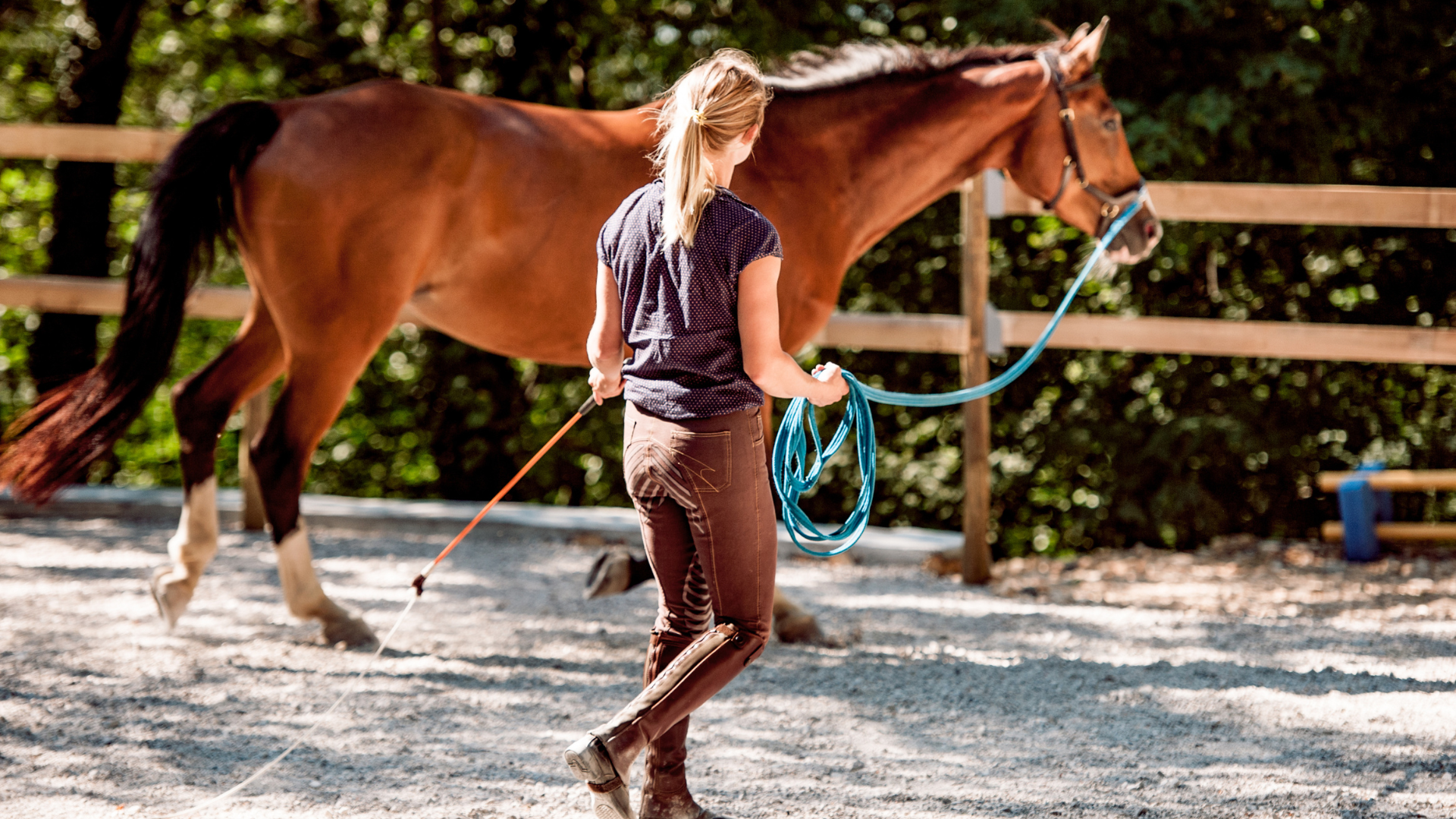Horse Breaking: Step by step to a safe riding horse
Breaking in horses is one of the most exciting and at the same time most challenging moments in horse training. You are faced with the important task of not only getting your animal used to the rider, but also shaping it into a reliable and relaxed partner under the saddle. This is a complex process that requires much more than just getting on the horse's back. You prepare it mentally and physically for its future tasks so that it can handle them without stress.
With patience, empathy and a well-structured approach, you can successfully break in your horse and make the training as optimal as possible. In this detailed guide, you will find valuable tips that will make the journey from ground work to your first rides easier. The process of breaking in a horse requires solid basic training and step-by-step instructions so that the animals become a safe and trustworthy riding partner in the long term.
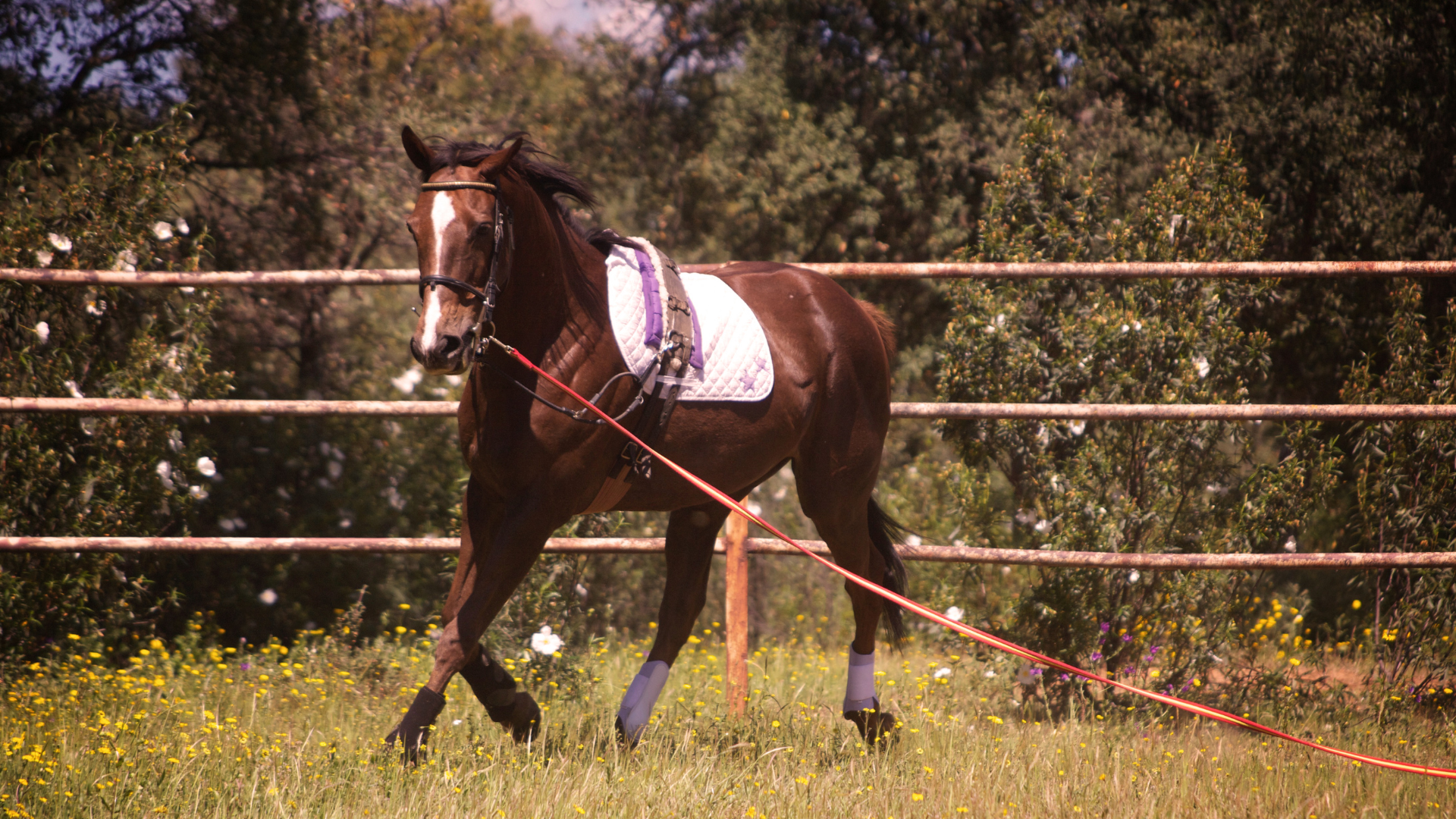
What does "breaking in a horse" mean?
Breaking in a horse describes the process of getting a young or inexperienced horse used to carrying a rider and communicating through the aids. It is not just about getting on the horse's back, but rather about targeted training in which the horse learns, step by step, to respond to the rider's signals.
A well-broken horse will pay attention to the smallest aids, work safely under the saddle and develop trust in the rider. It will bring you, as a rider, joy in the long run if this process is carried out slowly and carefully. However, stress or pressure during breaking in can lead to the horse developing fears that are difficult to overcome later.
When is the right time to break in a horse?
The question of the right time to start riding varies from animal to animal. As a rule, riding begins between the ages of three and four. However, this does not mean that every animal is ready for it at this age.
Physically, it should be sufficiently developed, that is, its muscles and bone structure must be strong enough to be able to bear the weight of a rider. Some animals are physically mature enough at the age of three, while others need longer. It is therefore important to observe closely whether your four-legged friend has reached the necessary level of physical maturity.
At the same time, the animal must also be mentally prepared. A young animal that is still very playful or lacks concentration will become stressed and overwhelmed more quickly when being ridden. So it needs not only good physical preparation, but also mental preparation.
The preparation phase: Why ground work and lunging are so important
Before you even think about riding your horse, you should invest a lot of time in ground work and lunging. This preparatory work forms the basis for successful training. Here your horse learns to concentrate, react to your aids and build trust in you.
Groundwork: Building communication on the ground
Ground work is all about building trust. Your horse learns to react to your body language and your voice signals. You can get it used to different situations and objects that it will later experience under the saddle. This way, it will learn to trust you and follow your instructions while on the ground.
Lunging: Promoting balance and coordination
Lunging is a valuable method for improving your horse's physical fitness. Your horse learns to move at a steady pace on a circular track and to respond to voice and whip aids. At the same time, it trains its balance, coordination and muscles, which will be beneficial later under the rider. This not only prepares the horse physically for breaking in, but also teaches it how to implement aids correctly.
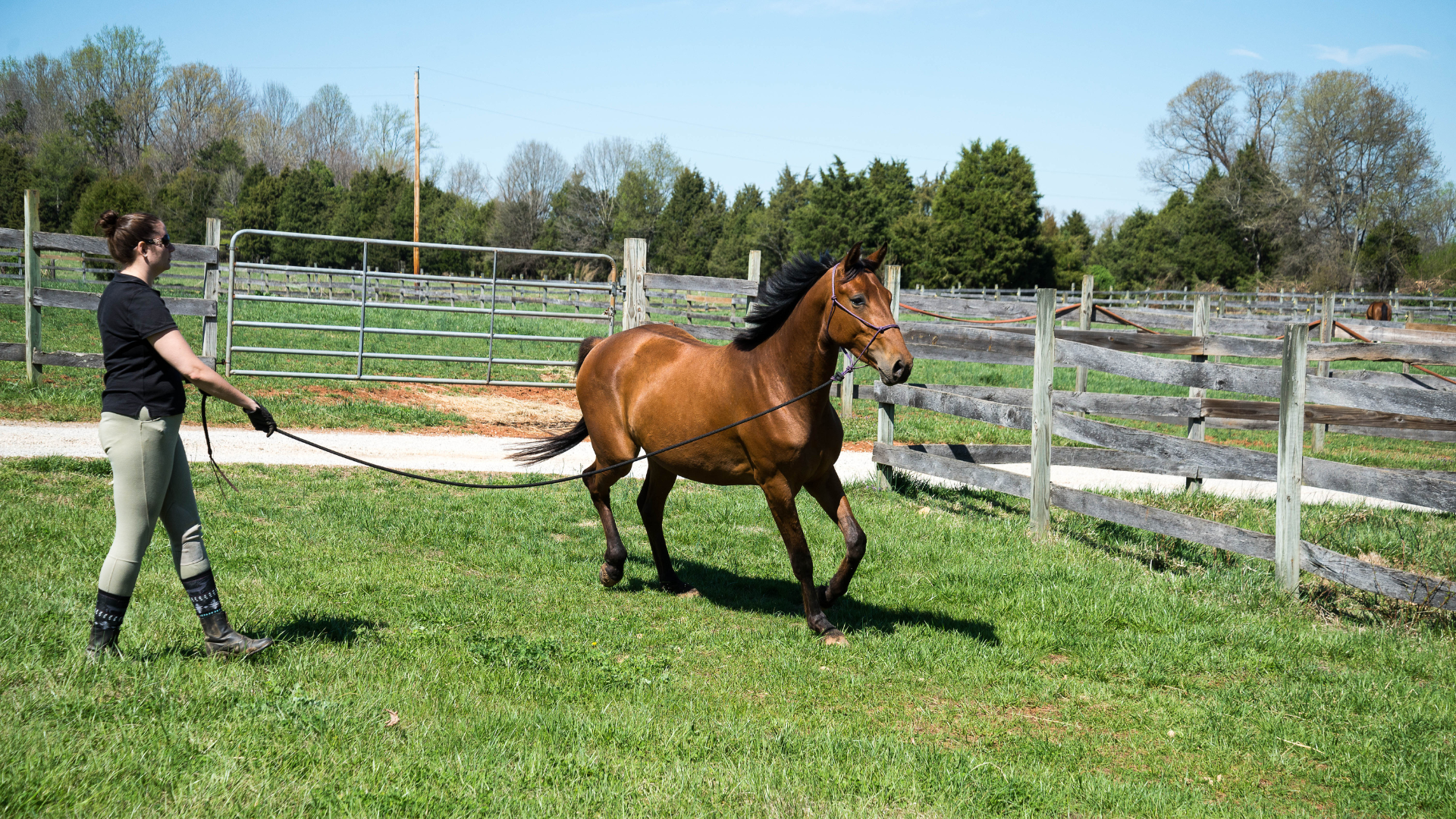
Trust and respect: the basis of every successful horse training
Successful training is based on mutual trust and respect. Your horse must trust you as a rider and be willing to let you lead him. Conversely, you should treat the horse with respect, recognize his limits and pay attention to his signals.
You build this trust in the preparation phase by spending a lot of time with your horse, caring for it, working with it and praising it again and again when it masters tasks well. If your horse notices that it can rely on you, it will remain calm and relaxed when you break it in.
The right equipment for breaking in a horse: What you need
The right equipment is crucial for success when breaking in a horse. Your horse must feel comfortable with the equipment, because poorly fitting equipment can not only cause physical damage, but also lead to negative associations.
The saddle
A well-fitting saddle is a must. Make sure that the saddle is specially adapted for the young horse. It should allow shoulder freedom and not press anywhere. An incorrectly fitting saddle can lead to tension and pain, which can unsettle your horse and delay the training process.
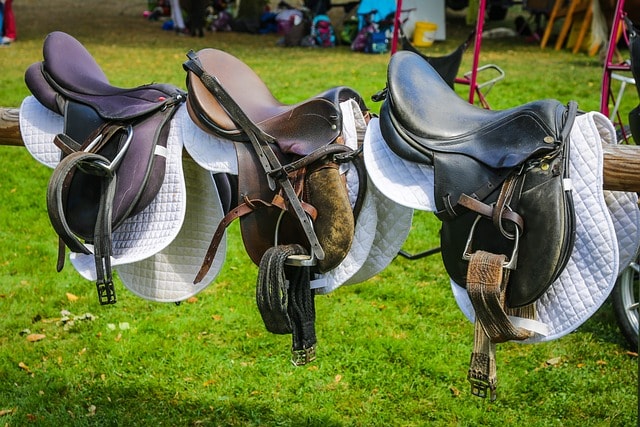
The denture
The bit should be soft and fit well in the horse's mouth. Young horses are particularly sensitive to pressure in the mouth, so you should choose a soft bit that will help your horse slowly get used to being carried and the aids. Alternatively, you can also work with a bitless bridle in the initial phase.
lungeing belt and saddle pad
In the first phase of breaking in, you can use a lunge girth or a saddle pad to gradually get the horse used to the pressure on its back. This way, your horse learns that it is carrying something on its back without immediately being confronted with the rider.
How to slowly get horses used to the saddle
Before you get on your horse for the first time, you need to get him used to the saddle. This step should not be rushed. The point is to show your horse that the saddle is normal and that it does not need to be afraid.
Step 1: The saddlecloth
Start by getting your horse used to the saddle pad or saddle cloth. Let him sniff it and stroke it gently over your horse's back before you put it on. Watch how your horse reacts. If he stays calm, that's a good sign.
Step 2: The lungeing girth
Next, you can put on the lungeing girth. Make sure that you fasten it carefully and do not pull it too tight. Let your horse get used to the feeling before you lunge it with the girth. Lunging with the girth is designed to get the horse used to the pressure on its back.
Step 3: The saddle
Once your horse has accepted the lungeing girth, you can add the saddle. Put the saddle on slowly and make sure it fits well. Practice getting on and off the saddle with your horse until it calmly accepts the saddle. You can then lunge it with the saddle to make it familiar with the new situation.
Patience is the key: Why you shouldn't rush into anything
Breaking in requires one thing above all: patience. There are no fixed timetables for when a horse should be at what stage. Every horse learns at its own pace and it is important that you adapt to this. There is no point in rushing the process just because you want to see initial success as quickly as possible.
Slow progress counts
When your horse is ready to take the next step, you will know that it will master the previous exercises calmly and calmly. Small setbacks or delays are normal. Give your horse the time it needs to develop confidence.
The first steps with the rider's weight: How to get your horse used to your weight
Once your horse has accepted the saddle, it is a matter of getting him used to the weight of the rider. This step is a big change for horses, so you should proceed very carefully here too.
Step 1: Apply light pressure
Before you get into the saddle, you can apply light pressure to the saddle by resting your hands on it or leaning gently over it. This will teach your horse that the weight on his back is something he can handle.
Step 2: The first seat
If your horse accepts the pressure without any problems, you can carefully sit in the saddle. Get another person to help you, who can guide your horse or calm it down if it gets nervous. Make sure you sit calmly in the saddle and do not make any sudden movements. Your horse must understand that it can trust you in the saddle.
The first rides at a walk: Safely transition to the next phase
As soon as your horse has got used to your weight, you can start with the first rides at a walk. Patience is also required here, as it has to learn to move safely with the rider on its back.
Leading on the lunge
Start by leading your horse on the lunge at a walk while you sit in the saddle. This way your horse has the security of the familiar commands from the ground and can get used to the rider's weight at the same time. Make sure that you sit calmly and do not irritate your horse.
Short units
Work in short units and always end the training with a positive experience. Praise your horse often and reward him when he masters a task well. This will keep him motivated and teach your horse that riding is something pleasant.
Don't forget to praise: Positive reinforcement when breaking in
Praise is a central part of any training, including when breaking in a horse. Horses learn through positive reinforcement, which means they repeat behaviors that lead to a reward. Use this knowledge to motivate your horse and encourage it to master new tasks.
How to Praise Correctly
You can praise in different ways: through words, by stroking or by giving treats. Make sure to praise your horse immediately after a successful exercise so that it understands the connection between the task and the reward. However, do not overdo the praise; use it in a targeted manner so as not to confuse your horse.
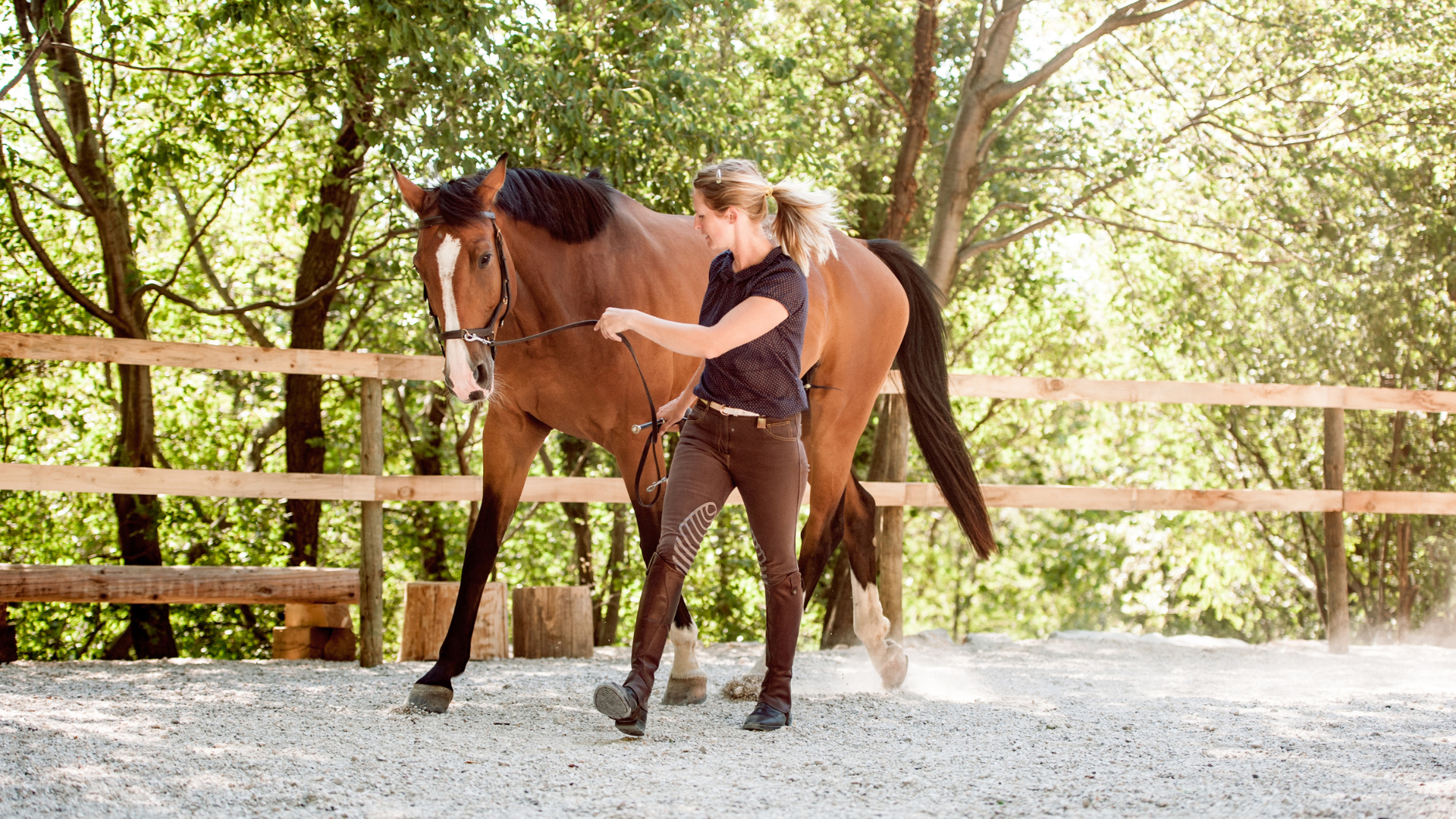
What to do when you experience setbacks: How to deal with difficulties
Setbacks are part of breaking in a horse. It can happen that your horse suddenly reacts fearfully or refuses to do tasks that it previously mastered well. Such situations are normal and require calm and composure from you as a rider.
Finding the cause of the problem
Try to find out why your horse is having difficulty. Maybe he is overwhelmed, or he is in pain from the equipment. Take a step back and work on the basics until your horse is confident again. Patience is especially important in such moments.
When you should consult a professional trainer
If you feel overwhelmed by the breaking in process or your horse does not react well to certain situations, it may be a good idea to call in a professional trainer. An experienced trainer can help you avoid mistakes and guide your horse safely through the breaking in process.
What a trainer can do
A trainer not only brings the necessary specialist knowledge, but also recognizes potential problems early on that you, as an inexperienced rider, might overlook. Through targeted exercises and techniques, a trainer can help you and your horse to successfully complete the training.
Your Horse's Physical Fitness: Why Training is So Important
The physical fitness of your horse plays a central role when breaking in a horse. A horse that does not have sufficient muscle and stamina will have difficulty carrying the rider and completing the required tasks.
Regular training
Before breaking in your horse, you should build it up through targeted training. Lunging, ground work and working in hand will strengthen the muscles and improve balance. Make sure that you build up your horse slowly and give it time to develop physically.
The mental fitness of your horse: avoiding stress
In addition to physical fitness, your horse's mental state is also crucial. A horse that is stressed or anxious will not be able to concentrate on learning and will have difficulty mastering new tasks.
reduce stress
Make sure that you do not overtax your horse. Work in short units and give him plenty of breaks. A balanced horse will learn faster and be more motivated in the long term.
Common mistakes when breaking in a horse and how to avoid them
Many mistakes can be made when breaking in a horse, which can have a negative impact on training later on. The most common mistakes include breaking in the horse too early or skipping important preparations.
Don't rush the process
The biggest mistake you can make is to rush the process. Make sure your horse has mastered each task before moving on to the next step. This is the only way your horse will become a reliable partner under the saddle in the long term.
The transition to independent riding: The next steps
As soon as your horse is able to walk safely on the lunge, you can slowly begin the transition to riding independently. This step requires a lot of patience, as your horse must learn to respond to your commands without anyone helping from the ground.
dismantling the lunge
Start by gradually lengthening the lunge line until you can finally ride the horse without it. At this stage, your horse should already know and understand all basic commands so that it can safely follow you under the saddle.
The Trot and Gallop: The Introduction of Faster Gaits
Once horses are confidently walking, you can introduce the trot and later the canter. These gaits require good balance and a high level of trust, so you should proceed slowly and carefully here too.
Introduce the trot carefully
Start by leading your horse on the lunge at a trot while you are sitting in the saddle. This way, your horse has the security of the familiar aids from the ground and can get used to the new challenge. Make sure that your horse stays calm and does not panic.
How long does it take to break in a horse?
Breaking in a horse is a lengthy process that can take several months. How quickly your horse masters the various steps depends greatly on its individual development. Some horses are ready for their first rides after just a few months, while other horses need longer to develop confidence and security.
No fixed time limit
Don't set a time limit. Each horse learns at its own pace and it's more important that the process is thorough and stress-free than that it's completed quickly.
The first rides with your horse: How to start safely
As soon as your horse can run safely in the hall or on the field, you can try your first ride. Here, too, you should proceed carefully and make sure that your horse is not overtaxed.
accompanied rides
You should always go on your first rides accompanied by an experienced horse. A calm companion gives your young horse security and helps him to get used to the new impressions outside. Start with short rides in familiar surroundings before expanding the terrain.
How to support your horse in the long term: The training continues
Breaking in the horse is only the first step in the entire learning process. Even after the first successful rides, it is important to continue to encourage your horse. A varied training program that offers both mental and physical challenges ensures that your horse stays motivated and continues to develop.
Varied training
Offer your horse variety in everyday life by regularly switching between different training methods. Lunging, riding lessons, cross-country rides and gymnastics exercises ensure that your horse is physically and mentally challenged.
Conclusion: Patience, trust and a well-structured plan lead to success
Breaking in a horse is a demanding process that requires a lot of patience, sensitivity and good preparation. Every step in breaking in a horse should be carefully thought through and carried out at the animal's pace. If you give it the time it needs and support it lovingly and consistently, breaking in will be successful. In the end, you will have a reliable and safe riding horse that will give you many years of pleasure.
Always remember: When breaking in a horse, trust and patience are the keys to success!
